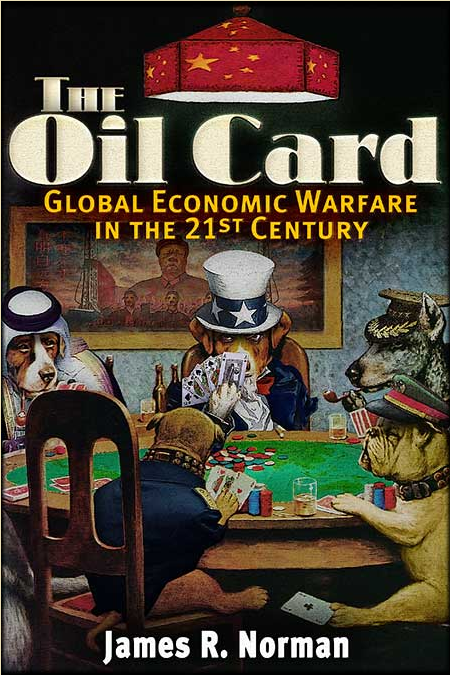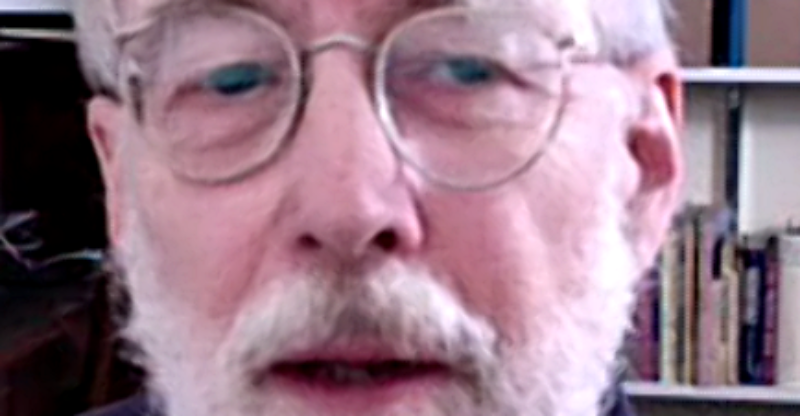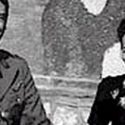The Journey 72. Jim Norman: Selling State Secrets (The Death of Vince Foster)
Publisher RA “Kris” Millegan talks with James Norman about “Fostergate” – rampant corruption at high levels of the US government, secretive bank spying activities of the National Security Agency, and wholesale trafficking in state secrets. (Jim also wrote “The Oil Card: Global Economic Warfare in the 21st Century.”)

Kris: I was running conspiracy theory research lists on the internet and all of a sudden Jim and J. Orlin Grabbe, a professor at Wharton at one time, started this Fostergate series online, telling this story about this stuff off computers and sending these envelopes to people in Congress and people in Congress were quitting. They were releasing something every day. I would sit there like a kid in candy store. It ended up with J. Orlin being on 60 MINUTES with Leslie Stahl in a bar in Reno. How did this happen?
Jim: I’m a business reporter. I did tend to focus on highly complex transactions, particularly money laundering, bankruptcy fraud, especially around the oil business. In early 1995 I wrote a cover story for Forbes Magazine that detailed an oil-for-arms money laundering process involving weapons shipments to Iraq.
I got a call from a fellow in Washington named Bill Hamilton, who ran a little software company called Inslaw. They had done some proprietary customization of a public domain database management system that came to be known as PROMIS. It was designed for use by the Justice Department. He said the government had stolen his proprietary parts of the software and they spread this software all around the place. Some of this software got sold to Iraq along with the arms shipments by Carlos Cardone, the Chilean arms merchant whom I had just written about. Very sophisticated tracking software that went to Iraq’s intelligence community. It turns out that this stuff had been marketed all over the globe to friend and foe intelligence organizations, law enforcement agencies, assassination squad managers in Guatemala, all over the place. A whole cadre of bad guys had been used to market this stuff, including Robert Maxwell, the publisher whose daughter [Ghislaine] is now on trial in New York for pedophile trafficking. This software was being moved all over the place.
One of the applications that Hamilton had heard that this software had been adapted for was international wire transfer surveillance through money center banks and wire transfer clearing houses. This was an elaborate, huge program during the Reagan Administration, the “follow the money” strategy, mainly for going after the Soviet Union to take down their funding sources, steal their money, finding who they were paying off. It became a really big deal.
One of the companies that Hamilton suspected had been involved in customizing and implanting this software abroad was an Arkansas company called Systematics. I came across this bibliography on the internet of Systematics’ press releases listing all of the money center banks that the company had sold their software systems to. All over the globe. Who did that? Turns out it was J. Orlin Grabbe. His email was on there. I contacted him. A former Wharton finance professor. He had written the standard textbook on international financial markets. The guy was brilliant. He had experience in cryptology. He’d done some contract work for the NSA. He had a bee in his bonnet about Systematics because [Systematics let intelligence spy on the banks who were its clients]. So he started putting these crumbs out on the internet about Systematics.
9.42 At the same time Bill Hamilton had triangulated this stuff a number of ways with intelligence sources of his own that had tracked [how] the intelligence community had purloined this software and had spread it all over the place and it was being used for tracking sonar tracks and the sounds of submarines. It was very easy to use and very customizable. It would allow you to organize all kinds of data, search it, slice and dice it. Exactly what you’d need for large, complex financial tracking systems. So the government grabbed this stuff and ran with it.
Hamilton came up with an intelligence source named Charles Hayes. Basically a former plumber for the CIA. He wanted to talk to Grabbe because he/Hayes was the spokesman for a clandestine, renegade computer hacker-cracker team of current or former intelligence community computer jockeys who were busting into computers all over the place. They had decided, since the U.S. government was unable to crack down on the corruption within the government, these guys were going to do their own thing. They’re going to go through all these bank accounts, track people’s money, find out where it came from, establish connections of corruption, and then somehow get these people out of the government. They had initially hoped to do it through the front door by going to the Justice Department and the legal system. They found out that that won’t work. All these agencies are utterly corrupt themselves. So they had developed their own system of basically assembling dossiers on all these people. Member of Congress. Members of the administration. Corporate CEOs. Bigshots. They assembled thick folders of incriminating evidence on these people and walked it to them in their offices in Washington and said, “You have two days to decide whether you’re going to resign or announce that you’re not going to run for office again or else this stuff is going to get released.” They began this in the late 1980s. And if you look at the trend of retirements, resignations, the intentional losses of people in Congress and the Senate from the late 80s to the late 90s, you’ll see there’s a huge ramp-up, a large turnover. These guys were having a significant effect.
Over time Orlin became rock solid convinced that Hayes was legit. And Orlin had his own sources in Washington who were corroborating all this stuff.
When they would find accounts belonging to U.S. government figures where they could confirm that the money was ill-gotten, they would [execute] a withdrawal and transfer the money to a holding account at the U.S. Treasury. They claimed they collected more than two billion dollars from hundreds of high level people, none of whom could say, “We was robbed.” All they had to do to get the money back is just go say, “Yeah, that’s my money. Give it back to me.” Nobody claimed it, so the money just sat there in escrow for use by the CIA.
In the process of all this, we came across this landmine, which was the Vince Foster story. Among the people who had one of these Swiss accounts – had millions of dollars in it – was Vince Foster, the deceased deputy White House counsel, former senior partner at the Rose Law Firm in Arkansas, Hillary Clinton’s partner, her handler on behalf of the National Security Agency.









